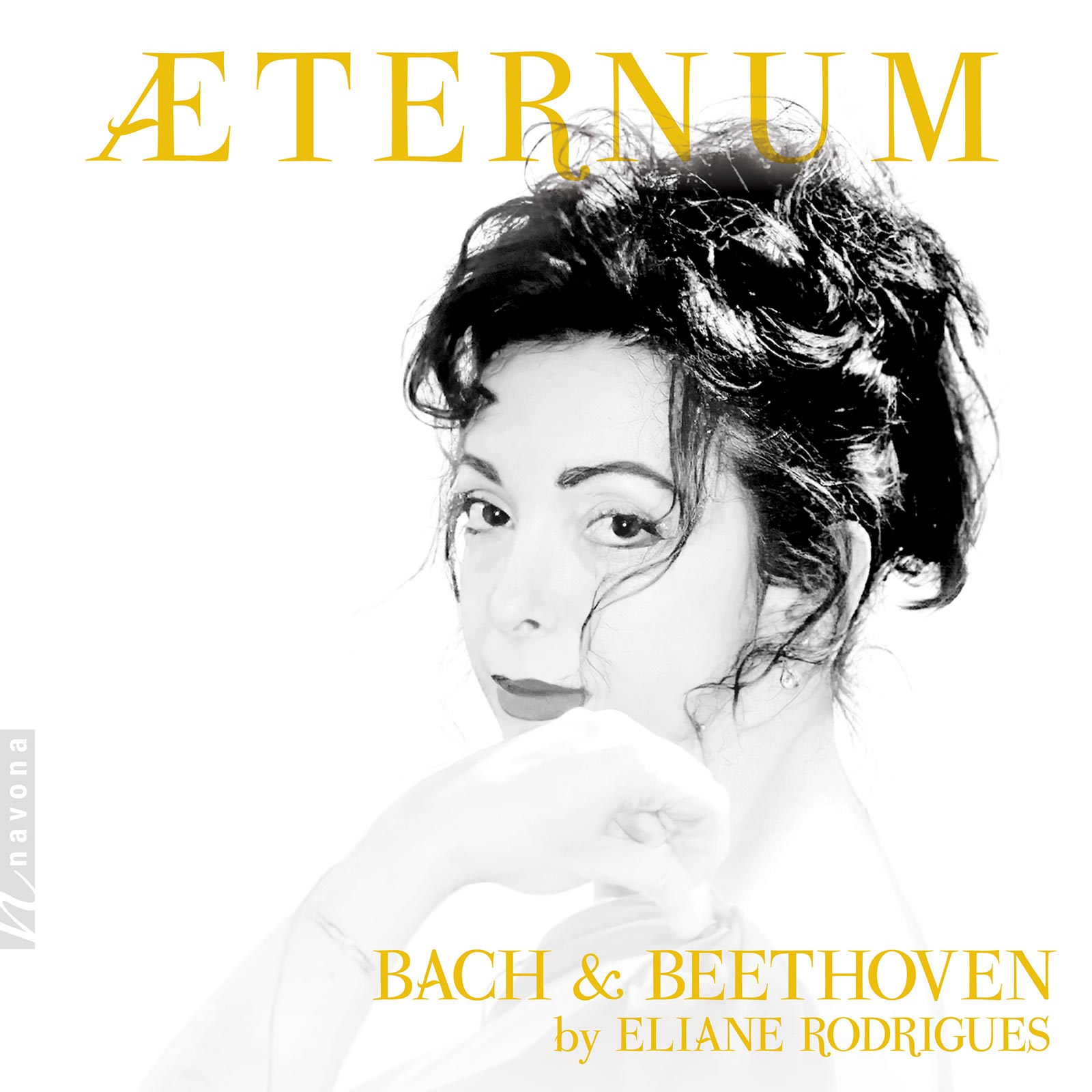
Share Album:
ÆTERNUM
Eliane Rodrigues piano
ÆTERNUM is a tribute to music's infallible steadfastness against the mundane adversity of human existence. Brazilian-born pianist Eliane Rodrigues convinces with her forceful, furious interpretations of keyboard works by Johann Sebastian Bach and Ludwig van Beethoven – among them the latter's Fifth Symphony, grippingly arranged by Rodrigues herself.
Rodrigues, who currently teaches piano at the Antwerp Conservatoire, is well-known for her prolific output of recordings. ÆTERNUM stands out not only for its celebration of Beethoven and his respected predecessor J. S. Bach, but also for the pianist's ability to uncover the hidden layers of well-known repertoire pieces. The listener encounters a Beethoven of unparalleled vehemence, but also, hauntingly, sees the veil lifted from Bach's sublimity, usually hidden in plain sight. When it comes to the struggle of the limits of individual existence with its desire for the eternal, this is the clearest example one could imagine.
The secret star of the album, however, is Rodrigues' Brahmsian arrangement of Beethoven's Symphony No. 5. The pianistic interpretation of her own arrangement is strikingly Romantic, not Classical: there is no trace of the straight, light-fingered piano technique of the era, but instead a truly Late-Romantic force which is quite appropriate for the subject. Beethoven, who himself was known for his powerful playing style, might very well have approved. But Rodrigues goes even further and infuses her rendition with an abundance of late 19th-century rubato, driving the music to an awe-inspiring frenzy. It's a truly futuristic approach, and possibly how the composer might have imagined his works to be played, had he lived half a century later.
ÆTERNUM, Latin for "everlasting," pays appropriate tribute to this years' jubilarian Beethoven and his great proto-colleague J. S. Bach: the works on this album have stood the test of time, and it's not unlikely that Rodrigues' interpretation thereof will as well.
Listen
Stream/Buy
Choose your platform
"In a newly focused perspective and a new freedom, this results in a very dramatic and powerful fifth, which is convincing in terms of sound, structure and pianism"
"Miss Rodrigues bows to Beethoven’s grasp of delicacy with the almost lovingly whispering dynamics"
Track Listing & Credits
| # | Title | Composer | Performer | |
|---|---|---|---|---|
| 01 | Prelude & Fugue in G Major, BWV 541 (Arr. for Piano): Prelude | Johann Sebastian Bach | Eliane Rodrigues, piano | 2:40 |
| 02 | Prelude & Fugue in G Major, BWV 541 (Arr. for Piano): Fugue | Johann Sebastian Bach | Eliane Rodrigues, piano | 4:41 |
| 03 | Fantasia & Fugue in G minor, BWV 542 (Arr. for Piano): Fantasia | Johann Sebastian Bach | Eliane Rodrigues, piano | 6:48 |
| 04 | Fantasia & Fugue in G minor, BWV 542 (Arr. for Piano): Fugue | Johann Sebastian Bach | Eliane Rodrigues, piano | 5:10 |
| 05 | Symphony No. 5 in C Minor, Op. 67 (Arr. for Piano): I. Allegro con brio | Ludwig Van Beethoven | Eliane Rodrigues, piano | 7:44 |
| 06 | Symphony No. 5 in C Minor, Op. 67 (Arr. for Piano): II. Andante con moto | Ludwig Van Beethoven | Eliane Rodrigues, piano | 10:28 |
| 07 | Symphony No. 5 in C Minor, Op. 67 (Arr. for Piano): III. Scherzo. Allegro | Ludwig Van Beethoven | Eliane Rodrigues, piano | 5:29 |
| 08 | Symphony No. 5 in C Minor, Op. 67 (Arr. for Piano): IV. Allegro | Ludwig Van Beethoven | Eliane Rodrigues, piano | 10:32 |
| 09 | Prelude & Fugue in A Minor, BWV 543 (Arr. for Piano): Prelude | Johann Sebastian Bach | Eliane Rodrigues, piano | 4:24 |
| 10 | Prelude & Fugue in A Minor, BWV 543 (Arr. for Piano): Fugue | Johann Sebastian Bach | Eliane Rodrigues, piano | 6:27 |
| 11 | Toccata & Fugue in D Minor, BWV 565 (Arr. for Piano): Toccata | Johann Sebastian Bach | Eliane Rodrigues, piano | 3:05 |
| 12 | Toccata & Fugue in D Minor, BWV 565 (Arr. for Piano): Fugue | Johann Sebastian Bach | Eliane Rodrigues, piano | 6:31 |
In collaboration with Music Center of the Omroep — mcogebouw.nl
Recorded on October 16-17, 2019 at Studio 1, Music Center of the Omroep in Hilversum, The Netherlands
Played on a FAZIOLI piano Concert Grand model F308, delivered and tuned by Evert Snel, Piano’s Wings BV evertsnel.nl
Artistic director and sound engineering Korneel Bernolet, bernolet.com
Cover photo Ernest Smeets
Executive Producer Bob Lord
Executive A&R Sam Renshaw
A&R Director Brandon MacNeil
A&R Chris Robinson
VP, Audio Production Jeff LeRoy
Audio Director Lucas Paquette
Mastering Shaun Michaud
VP, Design & Marketing Brett Picknell
Art Director Ryan Harrison
Design Edward A. Fleming
Publicity Patrick Niland, Sara Warner
Artist Information

Eliane Rodrigues
Hailing from the vibrant heart of Rio de Janeiro, Eliane Rodrigues emerged early on as a musical prodigy, her innate talent blossoming in the colorful tapestry of Brazilian culture. Her exceptional capabilities were first nurtured by Helena Gallo and subsequently honed under the guidance of Arnaldo Estrella, a student of the renowned Alfred Cortot and Yves Nat.
